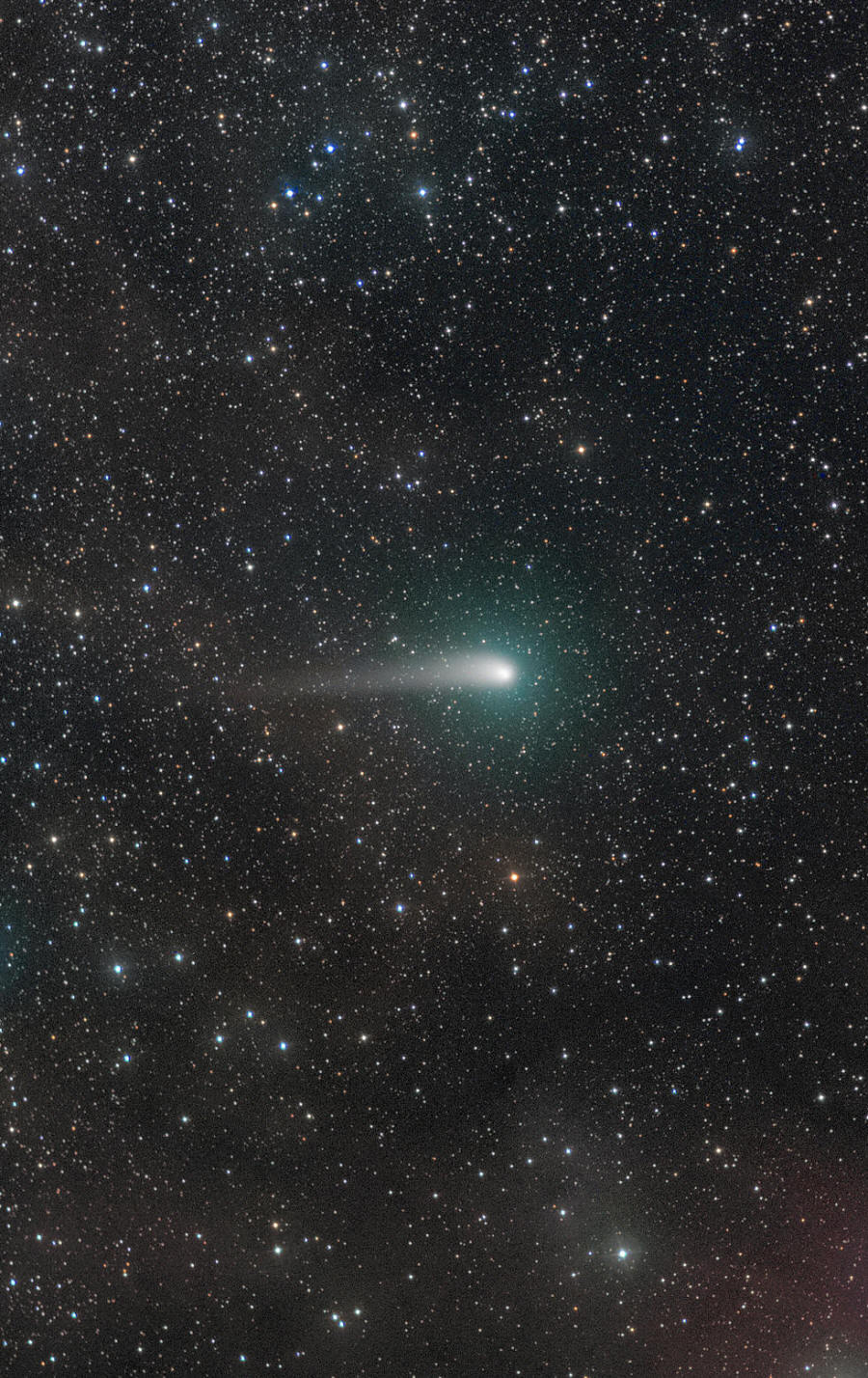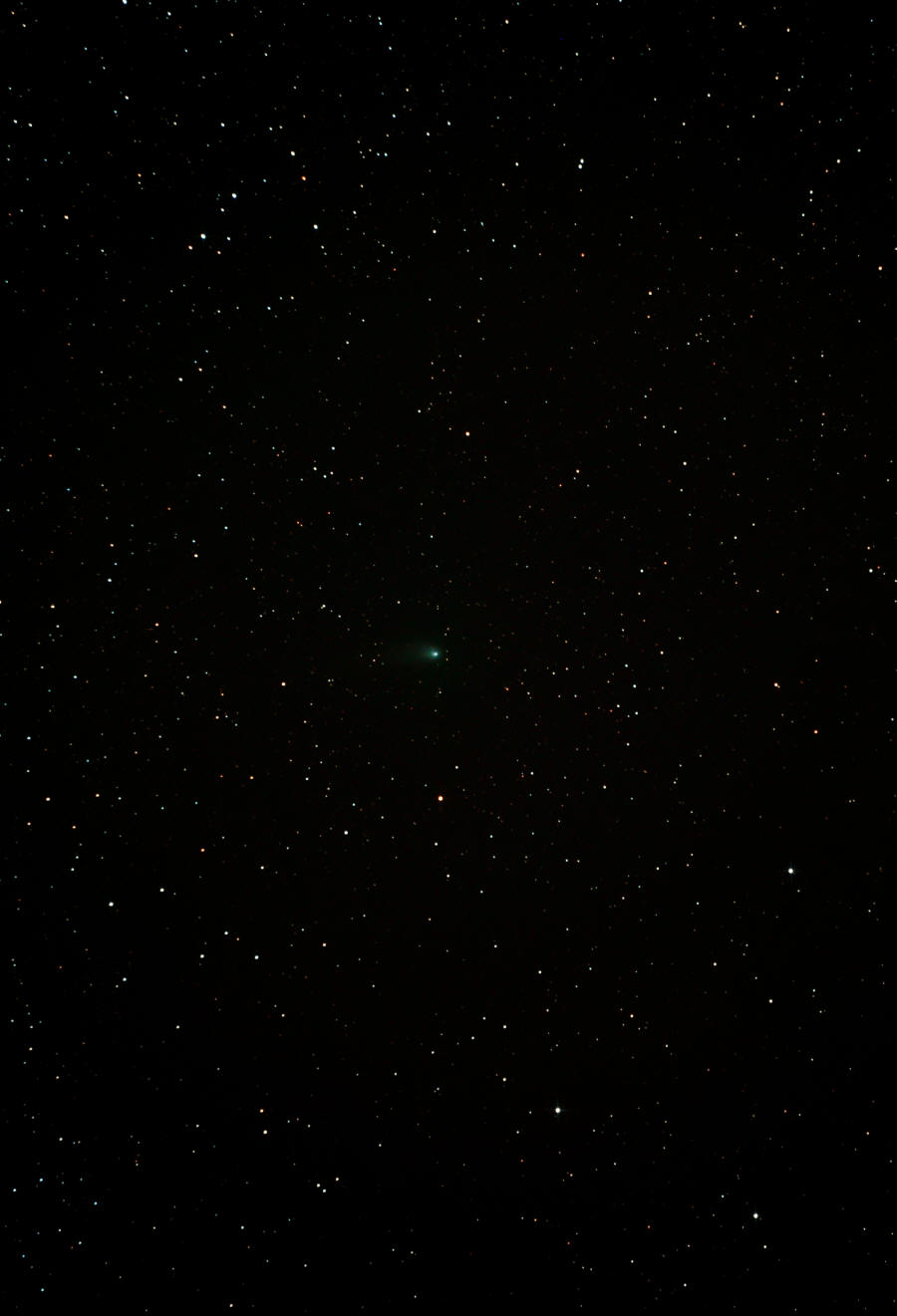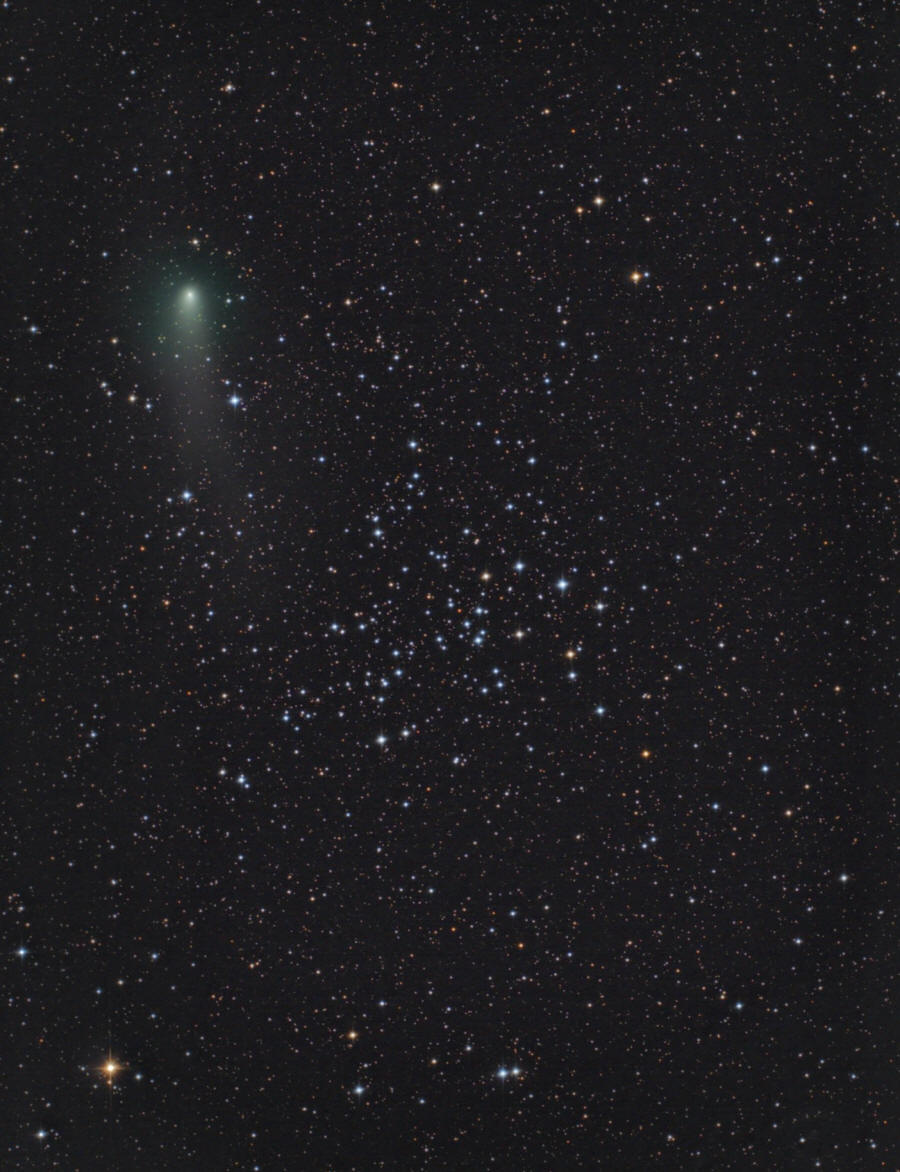
C/2017 T2 (PANSTARRS)
December 21, 2019
Images from the Spaceweather Photo Gallery
Michael Jäger, Weißenkirchen, Austria; 23:30 UT (6:30 pm EST)

This image of comet C/2017 T2 (PANSTARRS) was posted at Spaceweather. It was rotated 90° to match the view of the field we had in a 12-inch Newtonian telescope at Atsion around 8 pm EST, about an hour-and-a-half later the same evening (21-Dec-2019). In the scope, the coma was a barely-visible patch of haze with no tail apparent. The two stars we used to locate the comet are labeled on mouseover, as are a tight pair of stars near the coma that illustrate the movement between the two images. No hint of the comet was seen with 15x56 binoculars. The sky was clear, but transparency was average at best.
George Varros - Mount Airy, Maryland; ≈ 9 pm EST

This image of comet C/2017 T2 (PANSTARRS) was also posted at Spaceweather, and was also rotated 90° to match the view we had in a 12-inch Newtonian telescope at Atsion about 8 pm EST, an hour or so earlier the same evening (21-Dec-2019), as described above. Again, the two stars used to locate the comet are labeled on mouseover.
C/2017 T2 (PANSTARRS)
Norbert Mrozek, Hagen,
Germany
December 15, 2019

This image of the nominal 10th magnitude comet C/2017 T2 (PANSTARRS) was captured by Norbert Mrozek from Hagen, Germany, on December 15, 2019, at 19.30 UT (19:30 or 19:18?). It was posted in the Spaceweather.com Photo Gallery. Also present in the image is the open cluster, NGC 1528 near the center of the frame. The author of this page, Joe Stieber, spotted the same comet form Atsion Field in Wharton State Forest, NJ, at 7:45 pm EST (19:45 EST on December 15 or 00:45 UT on December 16), which is nominally 5¼ to 5½ hr after the image time, so the comet had changed position by about 8 arc mintes. Mouseover for labels. The image was captured with a 20-inch, f/3 hypergraph (as described at Spaceweather). The visual sighting was challenging through an 88 mm (3.5″) apo spotting scope at 60x. NGC 1528, which is a little north of a line between Capella and Mirfak, and a little more than halfway from the former to the latter, was easily visible in the 88 mm scope.
Click here for the SJAstro Home Page.
Last Update: Monday, December 23, 2019 at 09:47 AM Eastern Time